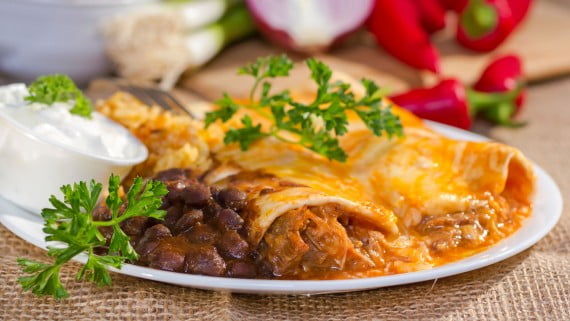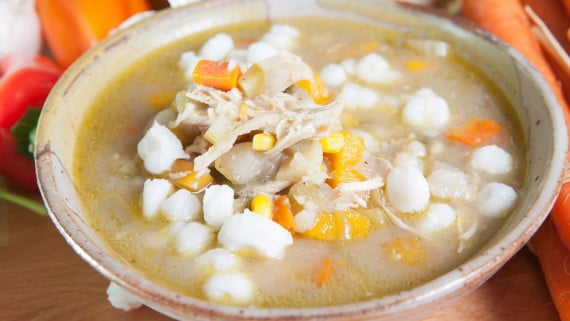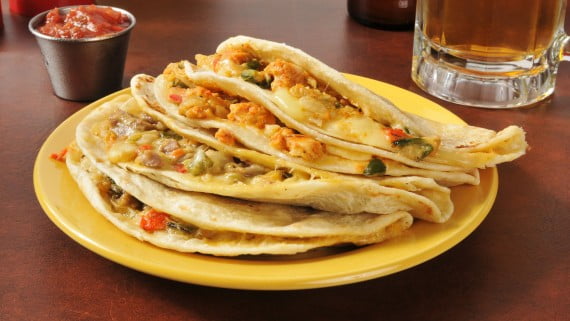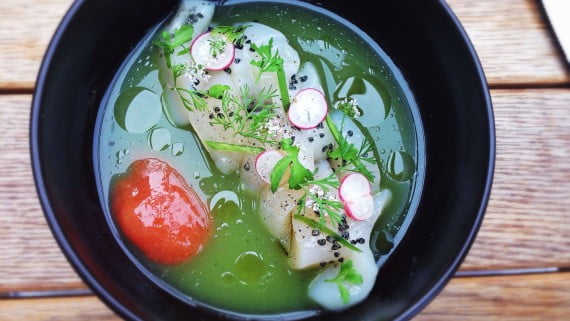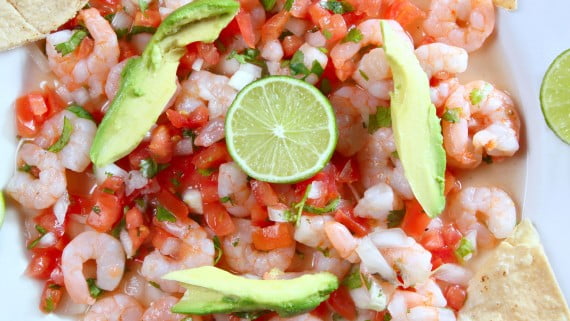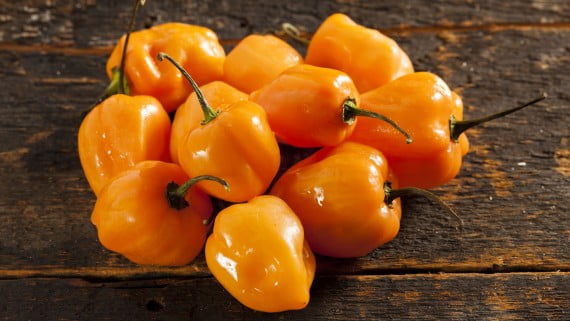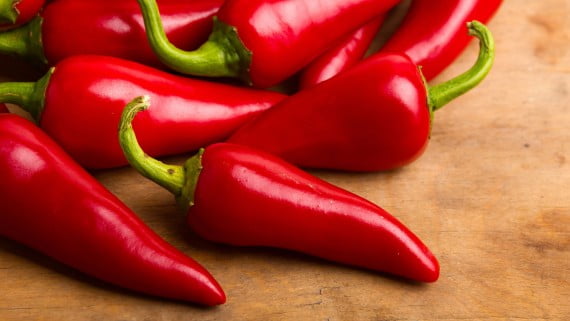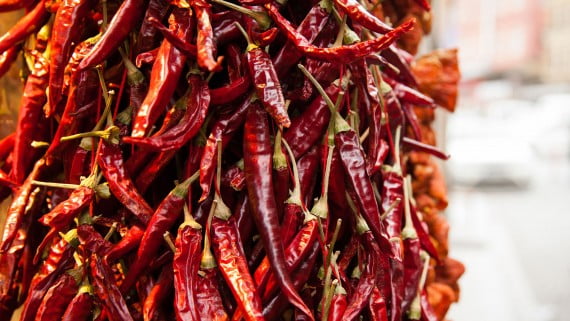Mexican gastronomy has a wide variety of products that allow you to season your dishes with intense flavors and different qualities. Its regional dishes are surprising for the palate of the millions of tourists who visit the country.
Below you have an index with all the points that we are going to deal with in this article.
Article Index
- 1.
- 1.1.
- 1.2.
- 1.3.
- 1.4.
- 1.5.
- 1.6.
- 1.7.
- 1.8.
- 1.9.
- 1.10.
- 1.11.
- 1.12.
- 1.13.
- 1.14.
- 1.15.
- 1.16.
- 1.17.
- 1.18.
- 1.19.
- 2.
- 2.1.
- 2.2.
- 2.3.
- 2.4.
- 2.5.
- 2.6.
- 2.7.
- 2.8.
- 2.9.
- 2.10.
- 2.11.
- 2.12.
- 2.13.
- 2.14.
- 2.15.
- 2.16.
- 2.17.
- 3.
- 3.1.
- 3.2.
- 3.3.
- 3.4.
- 3.5.
- 3.6.
- 3.7.
- 3.8.
- 3.9.
- 3.10.
- 3.11.
- 3.12.
- 4.
- 4.1.
- 4.2.
- 4.3.
- 4.4.
- 4.5.
- 4.6.
- 4.7.
- 4.8.
- 5.
- 5.1.
- 5.2.
- 5.3.
- 5.4.
- 5.5.
Main courses
The main dishes of Mexican cuisine are usually accompanied by sauces, either spicy or with other milder ingredients such as avocado. For its part, both beef and chicken are very present, as are the famous beans and tortillas. In the following sections we show you the most outstanding ones.
Enchiladas
All the Enchiladas They are similar to tacos, but with a lot of spice, without cereals inside and with plenty of cheese. There are those who gratinate them in the oven not only for the cheese that covers them, but also for the one inside. As is often the case with this type of food, there are different recipes depending on the region.
Thus, depending on the style of preparation, the enchilada It can be served well with turkey, chicken or beef, or simply cheese. There are also areas where it is accompanied by an extra garnish based on chopped or sliced raw onion, cream, cheese and lettuce.
For example, in Guanajuato the so-called “mining enchiladas” are prepared, while in Monterrey it is common to fill them with fresh cheese and fry them in a little oil. In addition, they are usually served with french fries, lettuce and tomato, as if it were a salad. In Sinaloa, on the other hand, they are given the name of «ground enchiladas»And you can see how they are prepared in the following video:
https://www.youtube.com/watch?v=Fc-nhNcWUzk
Bats
The populars Mexican tacos They are corn tortillas filled with chicken or any other variety of meat, red, green and yellow chili peppers, tomatoes and onions. It can be said that they are a classic in any Mexican food and, probably, one of its best known dishes internationally.
The simple act of rolling a tortilla on itself can already be considered a "taco". The consumption of corn tortillas rolled in this way is very common in Mexico when eating soup or some other dish of liquid consistency.
The most elaborate and popular tacos around the world are those that are filled with a dressing inside. Of this type, you can find three varieties: the al pastor tacos, the salsa tacos and the flutes, this last variant being the most consistent since in this case the tacos are fried.
fajitas
Fajitas are one of the most popular and consumed dishes within Tex-Mex gastronomy, which means that it is popular in both Mexico and the southwestern United States. This dish consists of meat strips grilled along with a variety of vegetables, among which are often found: onions, chili peppers, carrots, sweet corn, etc.
According to the most widespread story about the history of this dish, its invention is due to the Mexican cowboys who worked in Texas (United States) during the 1930s. At lunchtime, they were always given the hardest parts of the cow, so they were forced to cook that meat very carefully so that it was edible.
The previous ingredients are accompanied by a sauce, usually ketchup. All of this is served on a corn or wheat tortilla, which is rolled up, but left open at both ends. If you want to learn how to cook some real Mexican fajitas, don't miss the following video:
Burritos
It is a dish very similar to fajitas and tacos, since the burritos also consist of a corn tortilla or wheat flour filled with roast beef and some vegetables, such as chili peppers, although both meat and vegetables are optional ingredients.
The main difference is that they include fried beans, an ingredient that cannot be missing in this dish, and that the tortilla is closed at one end.
In fact, burritos They are the fried version of tacos, which is why they are also known as flutes o flour tacos. Its origin is located in the state of Guanajuato, although nevertheless in Yucatan a burrito is known as cooked, while in Cuernavaca I simply eat block.
White pozole
Actually from the east White pozole There are also red versions (like the one made in Jalisco) and the green version (common on the Michoacán coast). It is a soup made from a specific type of corn known as cacahuazintle, to which pork or chicken meat is added as a complementary ingredient.
The basic recipe includes as a basic ingredient corn grains of the type cacahuazintle or cacahuacintle, that is, a variety of corn native to Mexico whose grain is whiter, tender and rounder than usual.
The peculiarity of this type of corn is that, when its grains are boiled, they open in the shape of a flower and release a kind of foam, and this is the reason why they are used in pozole.
Empanadas
Empanadas are really eaten throughout Latin America. Thus, for example, it is one of the typical dishes par excellence of the Argentine cuisine. However, today, it has crossed barriers and is cooked in almost any part of the world.
In Mexico, where they are popularly known by the name of «Mexican dishes«, The recipe varies by region. In the north, empanadas filled with sweet ingredients are common; in the coastal areas, fish and shellfish are added. In Oaxaca different varieties of mole are added, and in the city of Pachuca (Hidalgo) it is common to add meat and potatoes.
Chips
Today, tortilla chips, better known internationally as nachos, they are famous all over the world. These are small corn or wheat flour tortillas that are fried and shaped into a triangular shape.
Normally, they are served covered with plenty of cheese, but other ingredients are also added, such as jalapeno peppers or any other variety of chile (usually some hot).
Quesadillas
Quesadillas also include corn or wheat tortillas and their main ingredient is cheese, hence its name. They are made on the grill or grill and cheese is added until it is melted. If only one tortilla is used, then they are served folded.
If one tortilla is placed on top of the other (so that the cheese and the rest of the ingredients are filled), then they are called synchronized. When ingredients other than cheese are included, they are often simply called hems.
Shrimp in aguachile
Shrimp in aguachile, also called simply aguachile, is an original Mexican dish from the region of Sinaloa. Its base ingredient is shrimp, although other complementary ingredients are also added to enhance its flavor.
So, in summary, the main ingredients of this dish are: shrimp, cucumbers, chopped serrano peppers, coriander, lemon juice, maggi juice (seasoning), red onion, salt and pepper.
Huarache
This dish is called huarache because its shape is reminiscent of the sandals of the same name that the natives of Mexico usually wear. It is made with corn dough, thicker than that of tortillas, and is generally oval in shape.
They are grilled and covered with various ingredients, including beans, lettuce, fresh cheese, sauces and the main filling, which is usually chicken meat, although there are also steak and chorizo.
Oaxaca cheese
This very particular variety of cheese is also known as String cheese o quesillo. It is a white and medium hard cow cheese, whose origin is located in the region of Central Valleys (Oaxaca).
It is an excellent cheese to be melted and, in fact, thanks to this characteristic, it is used as the base ingredient of the appetizer known as flamed cheese, which also has red chorizo. It is also the cheese used to make quesadillas.
Panela cheese
El Panela cheese is a very popular fresh cheese in Mexico and similar in appearance to goat cheese and ricotta cheese from the italy cuisine. It is soft to the touch, white and brittle like feta cheese from the greek cuisine, because, in fact, this cheese is inherited from the gastronomy of Greece. It is used to accompany salads, tacos, chili peppers or burritos, among others.
banderillas
Banderillas are nothing more than a sausage breaded with dough fried in oil, so they are crispy. They are served on a skewer and a spicy sauce is added, such as tabasco. They are a very popular aperitif in Mexico.
Mexican cakes
The Mexican cake is a kind of sandwich made of bread, which can be telera bread, birote or bolillo. This is split in half and filled with various foods, which vary according to the region where it is served. They can be served hot or cold and can be found in places called cakes or in street stalls.
They are usually dressed with mayonnaise, cream, tomato, beans, mustard and any variety of chili, even with several chilies at the same time, and also include typical Mexican sauces, such as guacamole. In 2014 the Torta Fair was held, in which more than 90 exhibitors prepared their own version of the famous Mexican cake.
Chicken with pipián sauce
Chicken in pipián sauce is chicken seasoned with the famous Mexican pipián sauce, which is prepared with pumpkin seeds and green chili, which gives it its characteristic greenish color. The chicken is cooked with garlic and onion and then covered with the sauce.
Fish ceviche
Ceviche is one of the most traditional dishes in Mexico and, in general, it is consumed throughout Latin America. It is made from white fish, such as hake, sole, corvina, etc. and shellfish can also be included.
To these ingredients, coriander branches, red onions, red chili peppers, lemon, pepper and salt are added. The end result resembles a kind of fish salad.
Chicken wings in BBQ sauce
Chicken wings in barbecue sauce or barbecue They are an international dish, but those prepared in Mexico are distinguished by including chipotle peppers, which are considered the most spicy variety of dry chili.
Rancheros eggs
Some say that the origin of the term rancher eggs It goes back to the time when day laborers worked on their ranches, whose daily breakfast was this dish and hence its name. This dish is also known by the name of ranch breakfast.
It consists of fried eggs accompanied by two fried corn or wheat flour tortillas. They are topped with ratatouille, coriander leaves, and hot peppers. Beans or rice can also be included.
Yucatecan tamales
There are four varieties of Yucatecan tamales. They are similar to Venezuelan Hallas, but, unlike these, they are steamed or baked.
The best known type of tamale is tamale without leaf, known under the name of tzacol, a term from the Mayan language that means God of heaven and it applies to this food because it is said to be a delicacy of the gods of heaven.
They are prepared with chicken and pork stew in achiote, which are introduced into a corn dough. The most traditional way of cooking them is in ovens made underground. In addition, there are two varieties: on the one hand, the baked ones and, on the other hand, the strained tamale.
Chilies
Chili peppers are actually peppers. It is an essential ingredient in Mexican food since prehistoric times, when recipes were invented that are still being cooked today. Its origin is from Mexico and, in general, from South America and Central America. There are them with a great diversity of shapes and colors, spicy and softer. They can be eaten dry or fresh. Some of the best known chili peppers are listed below.
Chilaca or pasilla chili
It is a type of fresh chili that is dark green, almost black, with an elongated shape, slightly flat and twisted. It is spicy and is drunk fresh, although it can also be drunk dry, in which case it is customary to call it Pasilla. It is grown especially in the states of Michoacán, Jalisco and Nayarit.
habañero pepper
Light green in color, although when it matures the color turns yellow-orange, it is another type of fresh chili. Its texture is smooth and it is considered the spiciest variety of chili of all. It is a basic ingredient in Yucatecan food and is usually taken when it is still light green or yellow, that is, when it has not yet fully matured. It is not taken dry.
Chile guero
Actually, this name is applied to any variety of chili that is yellowish, "blond" or greenish-yellowish. Güero peppers are fresh and vary in shape, flavor, size, intensity of heat, etc. depending on the region of Mexico where it is grown.
jalapeno pepper
This name comes from the fact that it is said that they are original from Jalapa (Veracruz), although at present they are no longer cultivated there. They are fresh green or dark green chili peppers, with a conical and elongated shape that are sometimes pointed. The skin is characterized by being shiny. They are very hot.
Chile Apple
It is a fresh, cone-shaped chili, fleshy and with bright, intense yellow skin. It is considered an extremely hot chili, almost at the same level of intensity as the habanero pepper.
It is denominated with different names according to the region; thus, in Michoacán they call it “chile perón”, in Veracruz “chile cera” and in Oaxaca “chile canario”, due to its yellowish color. When eaten dry, they are called "bell pepper" and take on a dark red color.
Serrano chile
It is a fresh green chili with a cylindrical shape that sometimes ends in a point. It is small (about 3-5 cm in length) and is considered spicy. It is usually eaten ripe (fresh). When ripe, it turns red. It is cultivated in the mountains of Puebla and Hidalgo, hence it is called "chile serrano".
Poblano Chile
It is a large chili (usually about 12 cm long and 6 cm wide), fleshy and in the shape of a flat cone that is usually eaten fresh. Its color is dark green and shiny skin. It is not considered very spicy, but it does have a characteristic flavor. This is the fresh chili most used in Mexican cuisine and, therefore, it is the most widely cultivated in the country.
green chile
This is the name given to all fresh green chili peppers. Therefore, those mentioned above, such as the serrano pepper, the jalapeño or the poblano, would fall into this group. However, in the center of the country, if one speaks of “green chili”, reference is always made to the serrano chili; otherwise, it is usually spoken directly of "jalapeño pepper."
Bell pepper chili
This variety of fresh chili is practically always dark green or red, but there are also yellowish and even orange ones. They are large and fleshy. This variety of chili is commonly referred to as "bell peppers" or "bell peppers."
It is considered a type of chili with a sweet taste. However, it is not usually used as an ingredient in Mexican cuisine, but simply to decorate.
Chile wide
It is a dry reddish-brown chili that is about 12 cm long and 7 cm wide in the shape of a triangle. They are flexible to the touch. It is the dry variety of the poblano pepper.
Bell chili
It consists of a dry chili, round and even spherical in shape, reddish-brown in color and moderately spicy, although its flavor is considered pleasant. It is used to make hot sauces. The name "bell pepper" is derived from the fact that, if we shake it, its seeds can be heard as if it were a bell or a rattle.
Chilcostle chili
This dried chili is dark red in color and large in size (12-15 cm long and 3 cm wide). It is spicy and is grown especially in the Oaxaca region, specifically in Cañada Chica, which makes it difficult to find it in the rest of the country. It is used to make sauces, stews, moles ...
Catarina chili
This chili is also known as "Catarinita chili". It is green, red when ripe. When it dries, it takes on a sepia-red color. Its shape is oval and ends in a point. It is used to give a reddish color to sauces, stews, soups, marinades ... It is grown in Aguascalientes and also in the southern United States.
Chilhuacle chili
This denomination includes three varieties of dry chili: black, red and yellow. This is because they share several characteristics, such as their Oaxacan origin, when they dry, they maintain their original shape without wrinkling and their skin is smooth. The name of this variety of chili comes from Nahuatl and literally means “old chili”.
Chipotle pepper
It is a type of dry and smoked chili, dark brown in color, with a wrinkled texture and considered the hottest dry chili of all. It is the dry variant of the jalapeño pepper. The name "Chile Chipotle" also comes from the Nahuatl language and means "smoked chili."
Chili pepper
This name is used to refer to all chilies that are small in size and round, oval and slightly conical in shape. When fresh, they are green in color and, when dried, they acquire a sepia red color.
Chili tree
They are a variety of elongated and thin chili peppers (7 cm long and 1 cm wide). When they are fresh they are green, but when they mature they acquire a red color. They can be found in popular markets with ease. Its flavor is very similar to that of serrano peppers and they are very hot. In fact, they are used to spice up a wide variety of stews.
Sauces
Fresh, spicy and acid sauces are a staple in every Mexican menu; in fact, what distinguishes Mexican food from the rest are its sauces, each with a distinctive flavor. Many dishes even mix several sauces at the same time, providing a unique taste and texture on the palate. Below we list the main sauces of Mexican gastronomy:
Guacamole
It is a sauce made with avocado. There are many variations from one area to another but the most common ingredients are avocado, onion, green clile and a few drops of lemon, although many people add roasted, dried or fresh tomato.
Red sauce
The so-called Mexican red sauce is made with cooked tomatoes, onion, garlic, hot peppers (such as jalapeños or apple trees) and fresh coriander branches.
Rooster's beak
This sauce is very popular in the gastronomy of Mexico and is made with onions, tomatoes and jalapeño peppers, as well as lemon olima juice. It is also known by the name of fresh sauce. It is a common sauce in fajitas and tacos.
Green sauce or tomatillo
Its ingredients are tomatillos, onion, garlic, hot peppers, and coriander. It is added to all kinds of dishes, such as tacos, quesadillas, fajitas, burritos, enchiladas ...
Mango Sauce
Mango sauce has a sweet to spicy flavor, and is made with mango (hence its name), red bell pepper. onion, hot peppers and coriander. It is added to any type of grilled chicken or fish, as well as a dip sauce for nachos.
mole
Several Mexican variants take their name from this sauce. Basically, in its most traditional version, it is a sauce made with cocoa, chili peppers of different types, tomatoes, almonds, raisins, cinnamon, parsley and other spices.
Hot sauce
This is the generic name that is used to refer to almost any sauce that is spicy in Mexican cuisine. As such, it applies to almost any dish.
Enchilada sauce
This sauce is specific to enchiladas and is basically used to give this dish a spicy touch. Includes hot peppers, onion, garlic, tomato sauce, and other spices.
Tabasco
This sauce with a spicy flavor is prepared with red tabasco chili, vinegar, salt and water, all macerated in oak barrels. It is native to the Mexican state of Tabasco (hence its name), although today it has been marketed as an American product and is sold throughout the world.
Chamoy
Chamoy sauce is made from dried fruit, hot chili peppers, corn (corn on the cob), salt, sugar, vinegar and water. Its flavor is a mix between spicy, acid and sweet. The fruits that are used for its elaboration are usually the apricot or the mango. Its appearance is reddish.
Jumiles sauce
Jumiles, bush bugs or xotlinillis are edible hemiptera insects and are the main ingredient in this sauce, as their name suggests. It is consumed especially in the states of Guerrero and Morelos. Its flavor is reminiscent of cinnamon, due to the stems and oak leaves on which these insects feed.
Cheddar cheese
This sauce is used for dipping, that is, for dipping. Usually, it accompanies the nachos and is served hot, with which the cheese is melted. The main ingredient in this sauce is, as the name suggests, cheddar cheese, as well as spreadable cheese, milk, butter, cornmeal, sweet paprika and hot peppers. Its color is yellowish-orange, due to the cheddar cheese.
Desserts
Without a doubt, an adjective that perfectly describes the typical desserts of Mexico is “sweet”. Liquid caramel, condensed milk and, of course, sugar are ingredients widely used in Mexican pastries. If you want to know what are the most traditional desserts and sweets in Mexico, keep reading.
mamey tie
The so-called "ate de mamey" are, in fact, pieces of the fruit of the mamey tree candied. For its preparation you need ripe mameys, chopped almonds, sugar, cinnamon and vegetable oil. Everything is crushed and a homogeneous mixture is made until a light syrup is formed.
All the ingredients are mixed until the mixture resembles a puree and, finally, they are put into a mold to shape it into small cubes. They are left to cool in the fridge before serving.
Coconut kisses
Coconut kisses are a typical Mexican dessert that is also known by the name of Coconut kisses. It is made with condensed milk, vanilla extract and grated coconut. All these ingredients must be mixed until they form a homogeneous dough that will eventually bake.
Caramelised peanuts
For the preparation of this dessert, you need raw peanuts in the shell, sugar, water and red food coloring. All these ingredients are mixed and simmered over medium heat, until they become a dry mixture similar to caramel.
Alfeñique candy
It is a figurine, usually shaped like a skull, made from caramel or jam and prepared with pure cane sugar. It has been prepared since colonial times in much of Latin America. The shape of a skull is because it is a sweet that is usually taken on November 2, that is, the Day of the Dead.
They are also known by the name of sugar skulls. Its elaboration requires the use of various artistic techniques. In addition, during the Day of the Dead, the famous Fair of the Alfeñique and the Regional Sweet is celebrated, which has been held since 1989 and in it you can see countless street stalls where this sweet is sold. In the following video you can see what we will find if we visit the Alfeñique Fair in Mexico:
Guava sweet
Guava sweet is a dessert similar to quince jam which is made with guavas, a very popular fruit in Mexico and Colombia and which is considered to have beneficial health properties, among other reasons because it has a high content of Vitamin C. This sweet is made with guava, sugar or brown sugar, cinnamon and water.
Caramelized apples
Caramelized or haunted apples are also a typical sweet on the Day of the Dead and Halloween Night. Other ingredients such as a cup of red wine, water, whipped cream, red food coloring and sugar are added to the apples (which should be red and medium in size). There is a version for children in which red wine is not used, but corn syrup.
Move us
This dessert is typical of the city of Huamantla, in the Mexican state of Tlaxcala. This sweet basically consists of mixing popcorn with melted piloncillo syrup. Piloncillo is a syrup that is prepared from the sugar cane juice after it has been soaked and boiled.
Black sapote cake
The black sapote is a fruit from the tree of the same name and whose flavor is largely reminiscent of that of chocolate, which is why it is said that this cake could be a substitute for chocolate cake, and much healthier.
After crushing the fruit until a kind of puree is obtained, it is mixed with brown sugar, banana and granulated sugar. This dough is put in a mold and baked until a firm and fluffy cake or pudding is achieved. It is served cold.
Beverages
From the famous tequila accompanied by a touch of salt and lemon to more natural drinks made from fruits such as lemonade or hibiscus water, among others, in Mexico it is very traditional to accompany meals with a special drink. Here are the most popular ones.
Fresh waters
The name "fresh waters" is applied to non-alcoholic beverages made with water, fruits, flowers or grains, and sugar. These drinks are taken during lunch or lunch, and are usually made at home. The most popular are lemonade, hibiscus water, orangeade, tamarind and rice horchata. They are served cold and are more typical of spring and autumn.
Tequila
Tequila is an alcoholic beverage originally from the municipality of Tequila, in the state of Jalisco. Its elaboration consists of the fermentation and distillation of the blue agave game (tequilana agave). This drink is considered the best known internationally and representative of the country.
It is a tradition to drink it with salt and lemon, because in the past on the borders of Mexico cheap tequila was served, which was not made with blue agave but with agricultural alcohols that gave it an unpleasant taste. Salt and lemon were added to reduce this flavor.
Mezcal
Mezcal is another alcoholic beverage that is made from the sugars extracted from the heads or ripe pineapples of various types of agave. It is a colorless or slightly yellowish drink.
Pulque
Pulque is a fermented alcoholic drink that is traditional from Mexico and of pre-Hispanic origin. It is prepared from the fermentation of mucilage, popularly known by the name of mead, the agave or the pulquero maguey. Although it is consumed throughout the country, it is especially popular in Guanajuato, Guerrero, Michoacán, Oaxaca, Puebla, Hidalgo, Veracruz and San Luis Potosí, among others.
tepache
Tepache is another very popular fermented drink in Mexico, although its alcohol level is quite low. Its flavor is similar to that of beer, except that it has a sweet touch. It is usual that corn is used for its preparation, especially in the indigenous communities from Oaxaca, Querétaro, Puebla, Sinaloa, Yucatán, Chiapas, Tabasco ...
It is considered that this drink was already taken as a symbol of religious worship in the times of the Mays. Currently, it is obtained from the fermentation of various fruits such as pineapple, apple, guava or orange, among others. You can buy its version marketed in supermarkets or also its homemade version, for sale in some street stalls.
This article has been shared 1013 times. We have spent many hours collecting this information. If you liked it, share it, please:

